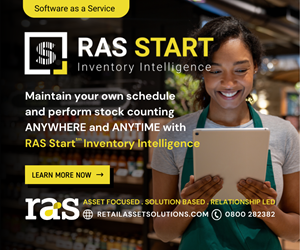RETAIL ENVIRONMENT
Navigating the Current and Future Impact of COVID-19 on Loss Prevention Technology
By Nigel Ashman, President, ONVU Retail and Colin Culleton, Consultant, ONVU Retail
The current coronavirus pandemic has affected nearly every single aspect of our society, creating unprecedented challenges for people, companies, and brands all over the world. Each day brings uncertainty and more questions, forcing both citizens and organisations to quickly adapt to come one step closer to some sort of normalcy.
One of the many areas that is seeing the impact of the COVID-19 outbreak is modern security and loss prevention in the retail industry, as business continuity professionals are working tirelessly to address a myriad of concerns and maintain operations as best as possible.
All businesses now have the government guidelines for re-opening and retailers are working hard to complete the required risk assessments.
Many retailers have seen their stores become “mothballed” — that is, kept in working order for future use but temporarily closed and unoccupied. This effect of the pandemic immediately generates a cause for concern: security. Mothballed sites still face safety risks such as vandalism and the potential for fires and commercial burglary, but in the current climate, sending guards to perform surveillance checks could be unsafe.
Remote monitoring is helping to address these concerns. The ability to transfer security efforts from on-site to remote surveillance capabilities is crucial at this point, enabling security operators to maintain protection from afar. Monitoring multiple stores from a central hub enables retailers to keep an eye on activity, manage key-holding arrangements and check the health status of fire and intrusion alarm systems, providing immediate reassurance and helping to save considerable time and cost.
Stores that did not have remote monitoring capabilities implemented prior to the pandemic can still benefit from the technology, engaging in relationships with technology providers that provide these services and surveillance equipment. Taking advantage of the technology is simple: for the most part, remote monitoring can be deployed with legacy video surveillance systems in a quick and seamless fashion, allowing retailers to use existing cameras to glimpse their locations.
In the near future, successful and safe store re-opening will require a mix of practical measures and technology.
Practical measures will include extensive social distance signage, 2m floor markings in all departments, directional barriers, queue monitoring and protective screens at till points. Technology may include automated entry & exit management tools, thermal image temperature monitoring solutions for staff, occupancy level monitoring and reporting, and automated click, collect & return facilities.
The risk assessments required to be completed by retailers will place a great emphasis on staff and customer safety. For example, the risk of complaints and potential litigation could be high if businesses are considered to have failed to adequately enforce social distancing measures.
CCTV analytics and 360-degree camera technology will play a critical part in this area. Real time monitoring and alerting to potential issues with customer numbers by department will provide essential support to store staff. Alerts to any mobile device, including smart watches, with definable trigger parameters can be set up, with the additional benefit of knowing that evidence will be securely stored.
The ability to remotely monitor stores by central support staff will also be another significant benefit: it will provide retailers an additional layer of reassurance and will ensure that only essential staff are physically required to attend stores.
The very nature of retail is changing as we know it, prompting security leaders to not only see the efforts of loss prevention, but to also incorporate the added task of keeping employees and customers safe and healthy. As these efforts materialize as retailers begin opening to the public, it is essential to identify ways to fulfill these goals, and technology remains one of the key ingredients in the new retail landscape.






